Here’s a look back at some of the important technology story lines from 2022 that was.
From metaverse mania to eye-popping breakthroughs in generative AI, it has been quite a year for technology. These are some of the stories that helped shape the last twelve months, as told through eight charts—with a smattering of insights to go along with them.
1. A tipping point for AI?
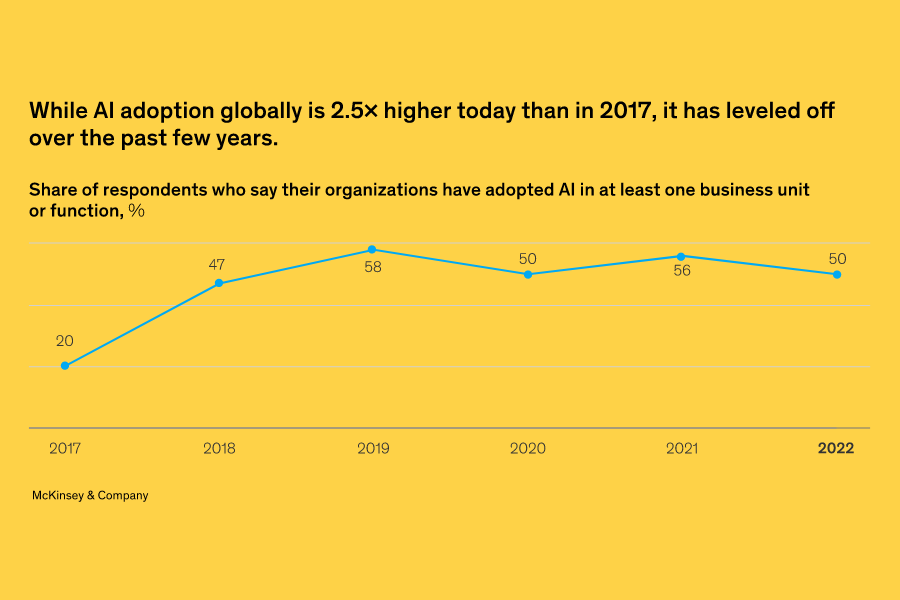
At first glance, our latest AI survey shows adoption leveling off over the past few years, though it has more than doubled since 2017, and applied AI continually ranks high in our annual tech trends analyses.
However, the number of AI capabilities companies use, such as natural-language text understanding, has continued to grow. And those seeing the most value from AI are beginning to industrialize it, laying the groundwork to develop more AI applications faster and easier—and pull further ahead of competitors. Yet, that’s not the tipping point to which the study refers. It’s the generative AI models opened to the public this year—like ChatGPT, which churns out original text content based on user prompts, and Stable Diffusion, which generates images from text—that could usher in the next boom in AI use, unleashing new applications and opening AI to those with little to no technical background.
While only 11 percent of AI-using companies reported leveraging the AI capabilities behind models like these (transformers and, to a lesser extent, generative adversarial networks, or GANs), that is expected to increase next year.
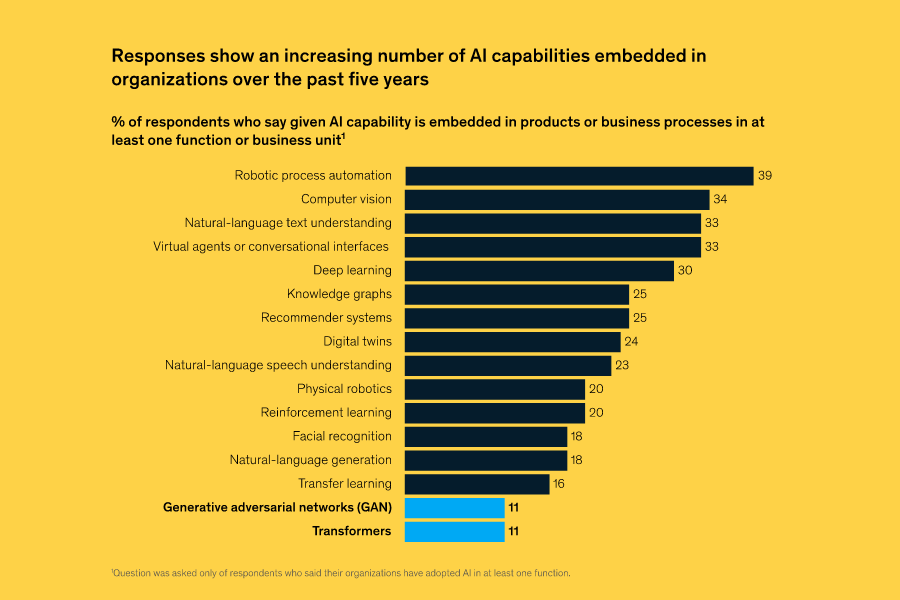
2. Tech talent remains tight, but there’s unconventional hope
Demand is growing exponentially for skills such as software engineering, data management, and cybersecurity.
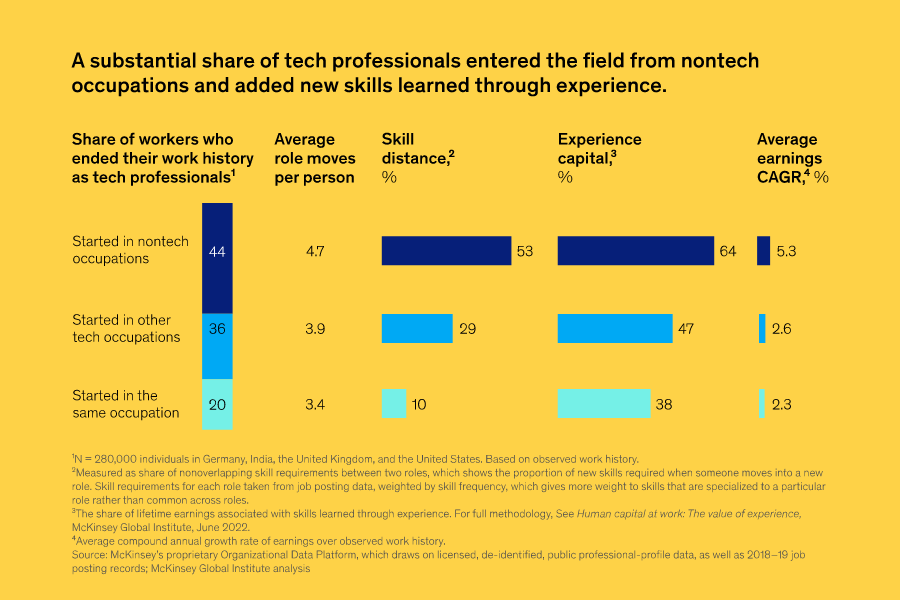
Eighty-seven percent of global senior executives surveyed by McKinsey said their companies were unprepared to address the gap in digital skills—and that was before the pandemic caused dramatic shifts toward remote work and e-commerce. Executives reported difficulty in hiring for all AI-related roles, and the emergence of quantum computing ushers in yet another—and potentially larger—area starved for talent.
There’s a bright spot: our research shows that people routinely break into tech from other fields, and they make substantial shifts in skills and specialization when they do. But leadership’s willingness to make unconventional hires and the commitment required to help them expand their capabilities require a shift in thinking.
3. It just keeps getting cloudier
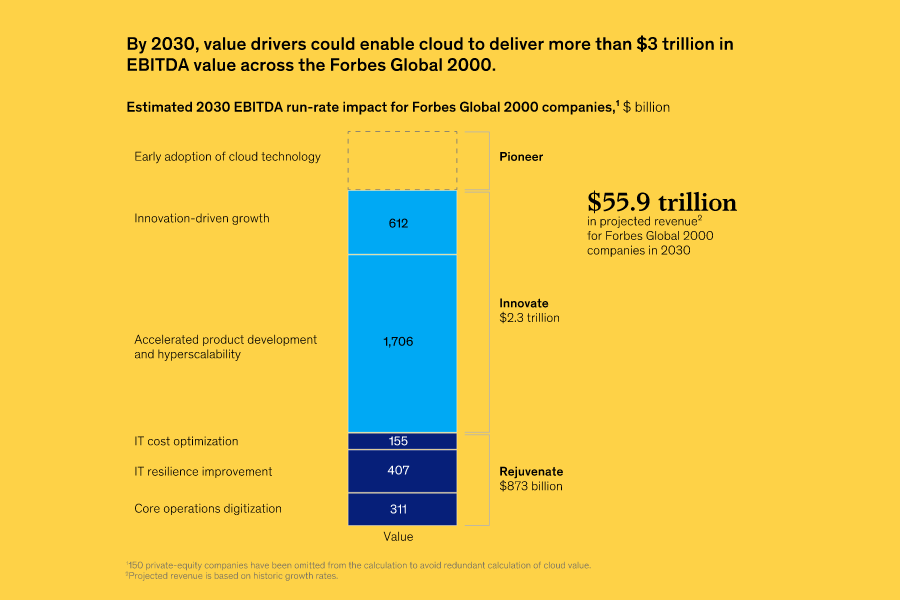
Large enterprises aspire to have 60 percent of their tech environment living in the cloud by 2025. The research team applied our 2021 cloud valuation model to the Forbes Global 2000 and found that cloud adoption could generate $3 trillion off the back of 700 use cases for this group of companies by 2030. Use cases largely fall into three areas:
- Rejuvenation, which includes value from IT savings, operational cost savings, and digital risk reduction
- Innovation, which includes value that is mostly revenue related, accounts for the bulk of potential cloud value, and includes using technology like AI and IoT to optimize business operations and improving time to market
- Pioneering, which covers the range of emerging technologies, such as quantum computing, which are too young to accurately value
4. Quantum computing progress brings high expectations—and a little fear
Speaking of quantum computing, advances in the field continued this year, and, with them, excitement rose for the technology’s potential to fuel breakthroughs in important areas such as drug discovery and climate change.
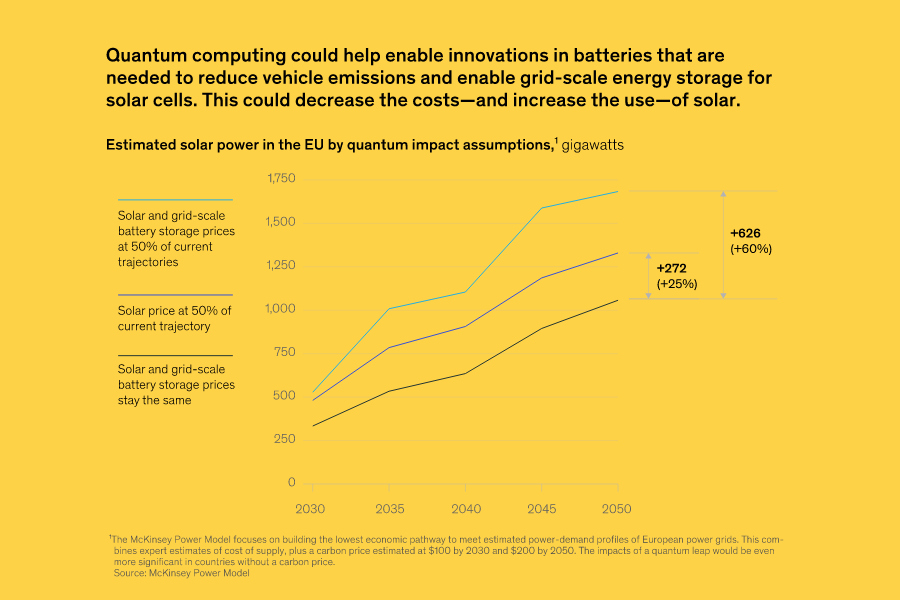
On the flip side, the technology’s power poses a significant cybersecurity risk: fully error-corrected quantum computers (which can provide highly accurate results) will be capable of overpowering today’s most common encryption protocols. Organizations in sectors where data has a long shelf life and systems have extended development cycles, such as in the public sector, are beginning to prepare now.
5. In technology, we (must) trust
A lesson learned from the study is that digital trust truly matters to consumers when the research team conducted our first global survey on the topic. For example, consumers actively seek out businesses that protect customer data… and many will take their business elsewhere when companies fail to do so.
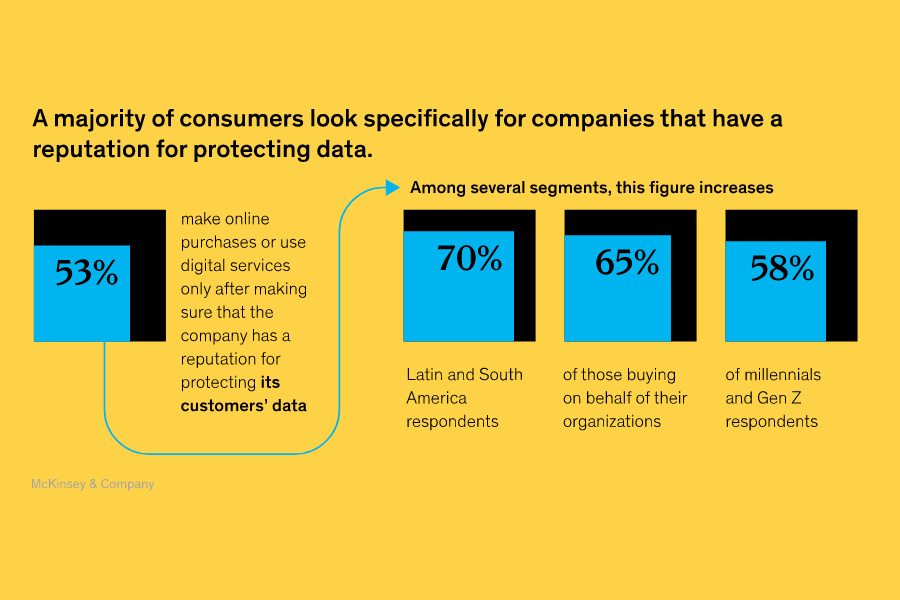
However, most companies aren’t putting themselves in a position to live up to consumers’ expectations. Less than a quarter of executives report that their organizations are actively mitigating a variety of digital risks across most of their organizations, such as those posed by AI models, data retention and quality, and lack of talent diversity. Companies should look to shore up their data ethics frameworks and practices, double down on cybersecurity, and de-risk AI by design, among other strategies, to ensure customer trust—and unlock a new vector of growth.
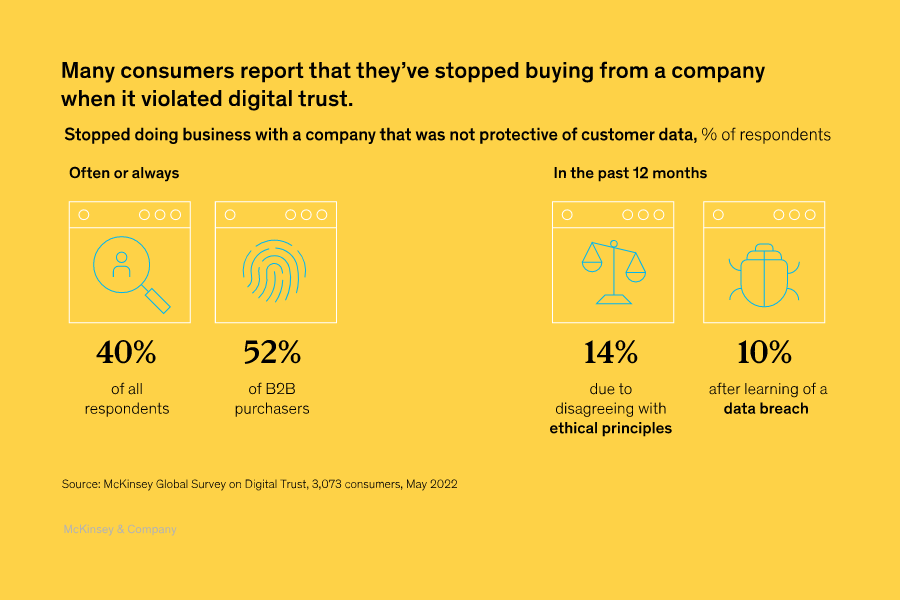
6. Metaverse mania ensues
Interest in the metaverse has exploded. Global Google searches for “metaverse” skyrocketed 7,200 percent in 2021, and metaverse online gaming platform Roblox reportedly hit over 55 million daily active users in February 2022. While it is early days for the metaverse—even its definition remains up for debate—it would be brave to bet against the developing solutions and billions of dollars flowing into every corner of metaverse infrastructure, including the digital twins that could provide its foundations. We believe the metaverse has the potential to be the next iteration of the internet, and our bottom-up view of consumer and enterprise use cases suggests it may generate up to $5 trillion in impact by 2030—equivalent to the size of the world’s third-largest economy today, Japan. While the future appears bright, there will inevitably be challenges on the way to making the metaverse of people’s imaginations technically feasible.
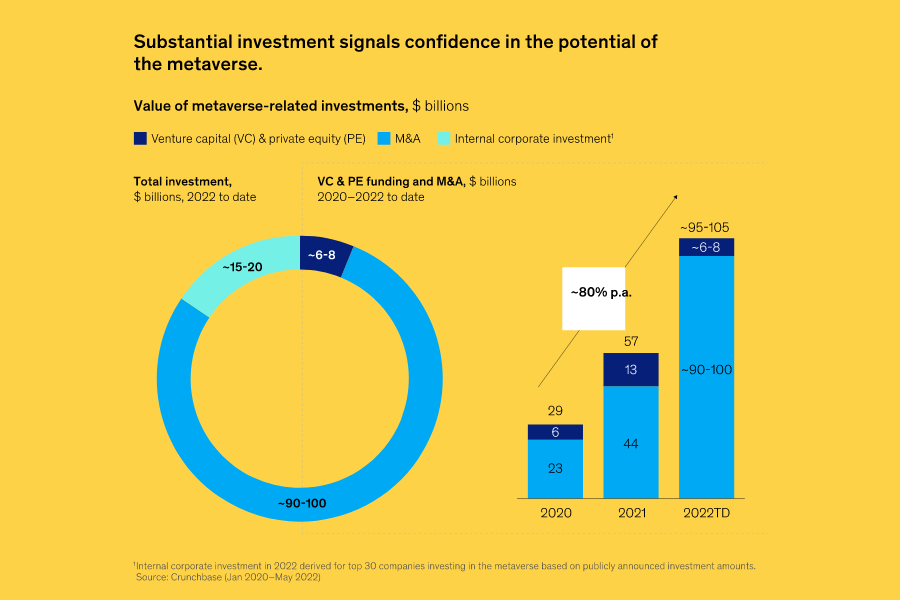
So, what are we looking for in 2023? Discover at Top 10 strategic tech trends for 2023.
Next steps
Whether you’re looking for ways to optimize your business or looking to undergo a full digital transformation, staying up to date on the latest tech trends is essential for forward-thinking business leaders and enterpreneurs.
Sunteco Cloud provides technology solutions and products through the Sunteco Cloud ecosystem, accelerating the digital transformation journey of businesses of all sizes. We focus on creating simple, engaging, and scalable solutions to ensure that we understand your business and challenges to deliver significant results effectively. Each product is just a piece of the big business picture. So we don’t start from our product but your business.
> Learn more Sunteco Cloud ecosystem
> See more Sunteco Cloud products’ pricing plan
> Start a free trial with Sunteco Cloud products and get $100 when creating a new account (contact us for promotion code)
Source: McKinsey




